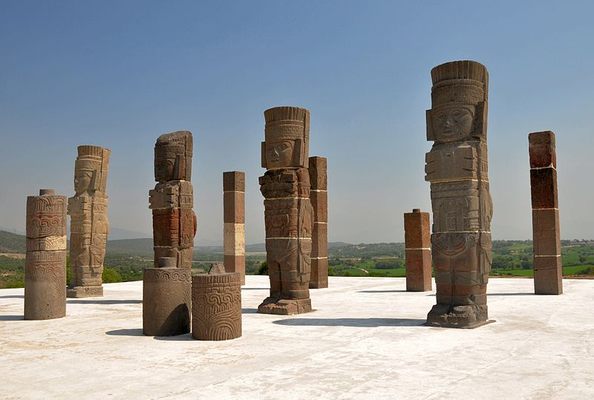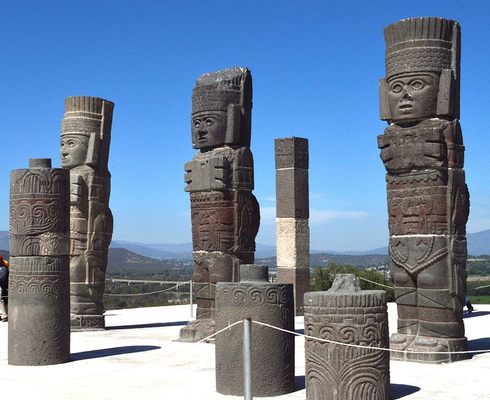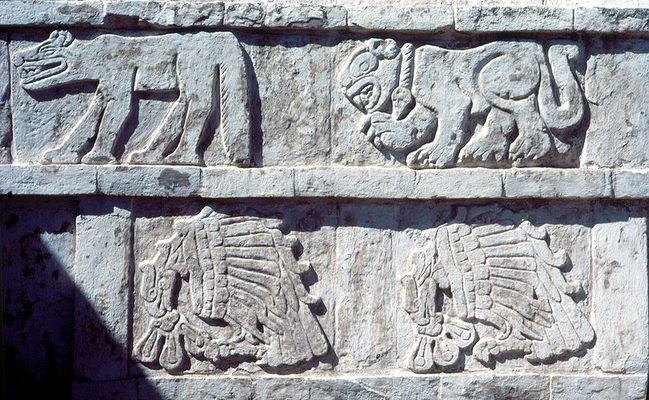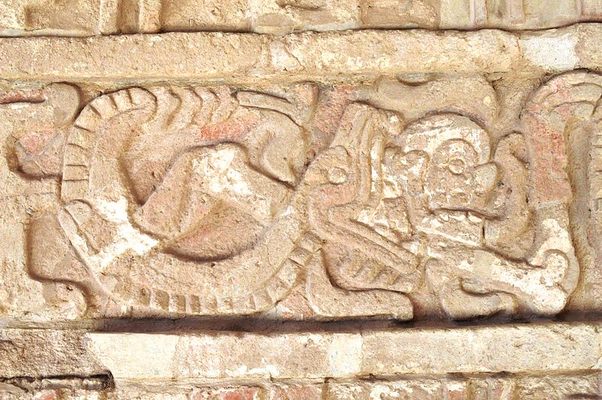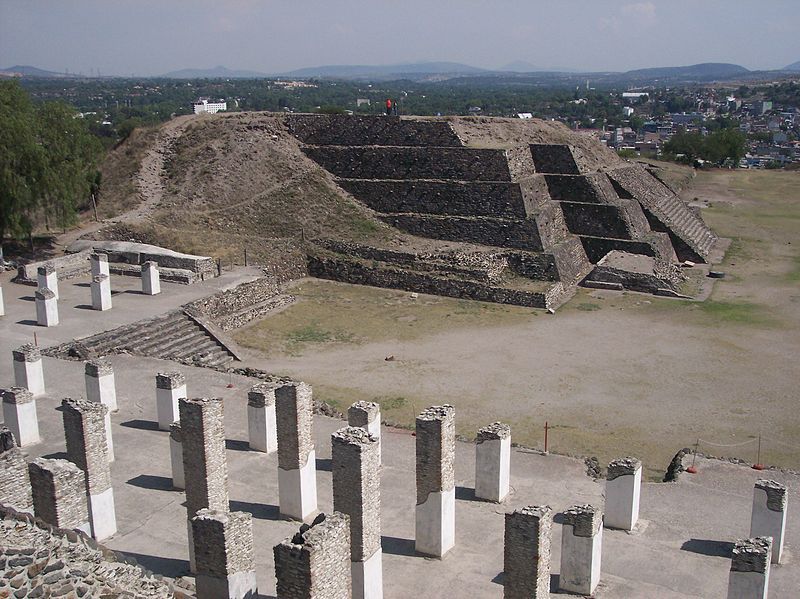About
Atop a platform pyramid in the ruins of the ancient city of Tula, these menacing figures of four colossal warriors tower over visitors, displaying the power and ferocity of the mysterious Toltec civilization. Their facial expressions and particularly their eyes convey, even today, an attitude of steadfast duty. It’s as if they’re stoically surveying the landscape for the approach of long-lost enemies.
These giants are surviving relics of the Toltec civilization. The squat and solid trunks of these sculptures are clothed in the characteristic practical attire of Mesoamerican warriors: they wear a cotton armor jerkin, their heads are crowned by elaborate feather headdresses, and on their feet are sandals for long-distance running.
The presence of these gigantic columns in the citadel of Tula was a calculated, overt demonstration of the power and aggression at the heart of the Toltec empire. As such, the giants were likely meant to both instill fear in enemies and inspire reverence for the ruler among the people.
The Toltec civilization rose to power after the decline of Teotihuacan and in the centuries prior to the rise of the Aztecs. Over the centuries, the cultural and military might of the Toltecs continued spreading from Central Mexico to as far away as the Mayan regions of the Yucatan Peninsula.
But the empire was not meant to last. The end of the Toltec’s reign came abruptly in the 12th century, after an army of nomadic tribes surrounded and attacked Tula, the empire’s capital. But the legend of this civilization endured, and centuries later, the Aztecs would wander the ruins of Tula and create a mythologized version of its history (unfortunately, much of the information about the city’s past was lost when the Aztec emperor Itzcoatl burned the books containing pre-Aztec history).
Today, you may visit the ruins and, while walking within the shadows of its guardian giants, perhaps experience some of the same awe that past explorers may have felt.
Related Tags
Know Before You Go
The archeological site and its excellent history museum are open from 9 a.m. to 5 p.m. from Tuesday to Sunday. Entrance costs $65 pesos during the week, but is free if you come on a Sunday. Be sure to wear plenty of sunscreen.
On the site, there is also a small and modest natural history museum dedicated to explaining the ecology of the area. It has a lot of taxidermy examples of the local fauna such as roadrunners, bobcats, opossums, and rattlesnakes.
Yucatan Family Adventure: Meteors, Pyramids & Maya Legends
Explore Maya temples and learn about the asteroid that wiped out the dinosaurs.
Book NowPublished
October 19, 2018
